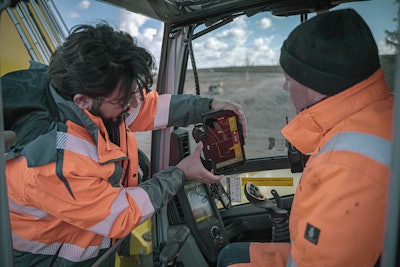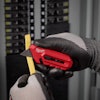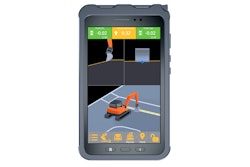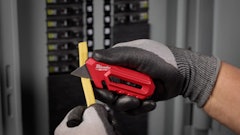
Contractors and entrepreneurs face tighter cost controls and escalating supply-chain pressures and seek to get more from their technology. Delays and cost overruns pose significant challenges to construction projects, with the industry in the US being severely affected by supply chain issues, rising labor costs, and a lack of user-friendly technology systems capable of optimizing efficiencies. Furthermore, the need for handling construction drawings digitally and documentation for quality control is rapidly increasing.
What is 3D Machine Control?
No matter the experience of a machine operator, 3D machine control helps the machine operator to be more precise in the field. 3D machine control assists the machine operator to optimize and precise the work while also making it easier and faster. Additionally, it minimizes the risks of making mistakes, thus negating the consequence of starting over or the cost of rework.
With 3D machine control, fewer people are required to be at the operating site, since the use of a surveyor isn’t necessary as it is already incorporated into the system. The surveyors may instead work on other assignments to optimize the time in the field, thus bringing the costs down and making it a good long-term investment.
Other benefits include a safer environment in the workplace. Workplace hazards may occur when there are slippery surfaces. These instances will be reduced, as the machine operator can spend more time in the excavator or wheel loader and use the tablet to observe where the work needs to be done. The work of the machine operator is solved faster, which also causes less wear and tear to the machine.
Is Digitalization the Future?
Molio, a non-profit construction knowledge center, made a report in 2020 about the digitalization of the construction industry. It is shown that nearly two-thirds of companies within the construction industry believe digitalization has more potential and much to gain from it. As technology is advancing, the construction industry also enjoys the benefits of technological advancement. Now, it is already an important part of a company’s planning, production, and project management.
Companies expect that the issue digitalization faces are the challenge of understanding the new technology. Even though 3D machine control has been used for many years, the demand for it has become more popular in recent years, this may limit the knowledge a machine operator has on 3D machine control. However, things may start to change within a few years. The companies’ clients are beginning to demand digital processes and solutions. It is shown that 82% of the clients strongly agree to have digital solutions to public construction, while 17% agree and only 1% do not agree at all. It is a huge increase compared to 2018, and therefore shows that clients have higher requirements for digitalization and that we are moving towards a digitalized age.
The report additionally shows that there is a strong correlation between a company’s digitalization and its effectiveness and productivity.
Research by the American Association of State Highway and Transportation Officials (AASHTO) in cooperation with the Federal Highway Administration in 2018 (Use of Automated Machine Guidance within the Transportation Industry, 2018) showed that contractors reported a gain in productivity of 10-25% and a cost decrease of 10-25% by using machine control.
The barrier that prevents digitalization lies in the culture of the company of the organization. 3D machine control and digitalization are continuously being explored in the construction industry, which might be the reason for the barrier. Another obstacle is the investment it takes to digitalize it. The report shows it is often small companies with a few employees that use it the least, while medium-sized companies use it the most.
Finally, the report shows the biggest flaws with digitalization are linked to more quality and fewer mistakes. It makes the processes faster and more effective and creates a better relationship with the clients and suppliers.
Simplifying Digitalization Benefits Operator and Machine Owner
Examples of 3D machine control include Unicontrol, Trimble Heavy Industry Machine Control products and Leica Geosystems solutions. Unicontrol asserts that its product is less complicated than 3D machine control seems to be. The goal of 3D GPS machine control is to make it simple to use, without it taking days or even months to learn.
“We focus on being user-friendly and making technology simple to use,” says Rich Hilliker, Unicontrol managing director, North America. “Our goal is to train operators in 30 minutes or less in the basic functionality, which is a huge step for the industry.”
Unicontrol’s solution is a combination of quality sensors and GPS antennas that enables users to see where the machine is localized. Effective, correct use of the product should optimize coordination with excavators and wheel loaders, without the need to take the project home, as it is in the company's cloud storage, which is an additional component to the product package. The cloud storage element gives access to all data for a specific construction project.
According to Molio, one of the challenges was also the investment required to digitalize.
"There’s been 3D guidance for high-end construction firms but not much for smaller-size equipment," says Hilliker.
"Small and mid-sized contractors haven’t been catered to as much because of 1) cost and 2) their application is too complex," Hilliker continues. "Laying out the overall job is difficult. We have therefore tried to make the price affordable for all entrepreneurs and companies."
Nina Popović is the Sales & Marketing Manager at Unicontrol.




















